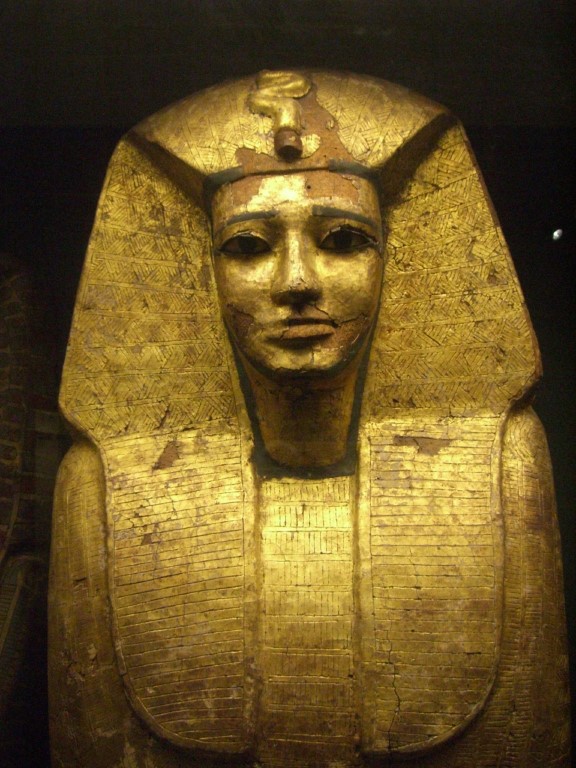17th Dynasty of Ancient Egypt | Ancient Egypt | Facts | History | Egyptian Pharaohs
The Pharaohs of the 17th Dynasty of ancient Egypt ruled for approximately 30 years. The Hyksos were forced to accept the Theban dynasty that ruled the south of Egypt from Thebes as the capital, while the Hyksos ruled from their capital, Avaris, over Middle and North Egypt.
The relationship between the Theban rulers and the Hyksos appears to have been relatively peaceful for about 20 years.
The 17th Dynasty of ancient Egypt
During this time, it appears that 4 Theban families succeeded each other on the throne. Rahotep seems to have died without a male heir, allowing the kingship to pass to the family of Sobekemsaf I, who was succeeded by two of his sons, Antef V and Antef VI. Antef VII, a brother-in-law of his two namesakes, only seems to have ruled for a short time as a co-regent of Antef VI.
The Theban rulers of the 17th Dynasty were contemporary with the Fifteenth and Sixteenth Dynasties, as Egypt was split into small Hyksos-ruled kingdoms. At the end of the dynasty, the Hyksos were defeated and the kingdom once again reunited, as Ahmose, the brother of Kamose, founded the Eighteenth Dynasty and with it The New Kingdom of Ancient Egypt.
There are 17 rulers who appeared in this dynasty, but most Egyptian sources ignored that dynasty and considered it one of the intermediate periods.
The Capital of the 17th Dynasty of ancient Egypt
This family appeared in the region of Thebes, the fourth district of the provinces of Upper Egypt, and its influence extended to Elephantine in the south and to El Quseyya in the north. At the end of the Seventeenth dynasty, the Hyksos will be defeated and the kingdom was once again reunited. Ahmose, the brother of Kamose, founded the Eighteenth Dynasty and started the New Kingdom.
The seventeenth family considered him the successor to the rulers of the thirteenth dynasty, and he married her, Antef the Fifth, one of the ladies of the thirteenth dynasty.
The 17th Dynasty and the Hyksos
The relationship between the first kings of the 17th dynasty and the Hyksos was not an enemy relationship, on the contrary, it was a friendly relationship, and the Egyptian rulers in Thebes paid tribute to the Hyksos, as each of them allowed the other to facilitate trade routes. Seals and scarabs of the Hyksos were found in Nubia, and the people of the south allowed them to use quarries in exchange for grain from the north and to allow the cattle of the south from the shepherd in the pastures of the north
Nubia
Nubia separated from Egypt in the era of the Second Intermediate Period. The Nubia, as is known, is divided into two parts: Lower Nubia, including the first and second cataracts, and upper Nubia from the third to the fourth cataract.
It borders up to Aswan, and even at this stage, there were some Egyptians who lived in Nubia, which indicates that those who ruled were just a few rulers. In this period, the ruler of the Hyksos was on the peace of the ruler of Nubia
Liberation wars
The 17th dynasty ruled in Thebes, and it is believed that its first king, Intef the Fifth, tried to confirm his legitimacy in the rule of Thebes by marrying one of the ladies of the king’s house in the thirteenth dynasty.
From this family came the liberator of the country, who are considered the ancestors of the kings of the eighteenth dynasty, the most important kings of the 17th dynasty, King Tao the first, Seqenenra, the son of King Tao the second, and the other son of Ahmose.
Our sources on the wars of liberation
- Sallie Paper
- Kamose stela 1
- Carnarvon Tablet
- Karnak Stela 1
- The mummy of King Seqenenra
- Kamose stela 2
The wars of liberation
start from the days of King Seqenenra, when he began to be harassed by the Hyksos. our sources for this were the Sallie Paper, British Museum No. 10 185, which dates back to the era of Ramesside era.
The king of the Hyksos called Apophis sent a messenger to the ruler of Thebes, complaining about the noise of the hippopotamuses, which may be meant by spies who were in the Delta or the gatherings of his forces in preparation for his fight and that they disturbed his sleep in Avaris the name of the capital, the Hyksos at that time
Seqnen Ra honored the messenger and sent with him some gifts to the rulers of the Hyksos, and then the social papyri refer to Seqnen Ra with the senior men of the state. That was the end of that source.
The mummy of King Seqnen Ra
It was found in the Cache of Deir al-Bahari in 1881 with another group of royal mummies. From this mummy, it became clear that he had a hatchet in the middle of his head and some wounds. They suggested that Seqnen Ra died in one of the battles with the Hyksos
Gardner mentioned that Seqnen Ra may have died due to disagreements in the house of the ruler and after his death came to the power his son Kamose from 1558 to 1554 Leave a few traces.
Kamose Monuments
A simple tomb in Dra’ Abu al-Naga, west of Thebes. It was found in 1857 and was found a simple sarcophagus. Inside it was a dagger bearing the name of Ahmose and a mirror. The dagger was gifted to Napoleon, and they are now in the Louvre Museum. We do not know the sons of Kamose, perhaps he did not marry.
and then what is worth mentioning is that Ahmose’s son of Abana, he mentioned in the inscriptions of his tomb Seqnen Ra, and after him Ahmose, perhaps for the short period of Kamose rule.
but we know that the royal sources told his war actions against the Hyksos
Carnarvon Tablet
Carnarvon is the person who was financing Haward Carter to make excavations, and it was found in 1908 in the Dra` Abu El-Naga area, close to the site where he revealed the tomb of Kamose, and Carter revealed two wooden panels that were for a student practicing writing.
What concerns me is the first Carnarvon board on which the student wrote eight lines of the teachings of Ptah Hotep and drew a game similar to Sega underneath, and on the other side, he wrote a text of 17 lines telling a story.
Karnak Stela
Chevrier era during the excavation seasons 1932 – 1935 on two pieces of stone when he was cleaning the third edifice of the Karnak temple. The two pieces have 15 lines on them. It was suggested that the width of the painting was two meters and its height was more than two meters. It is clear that it is in the original from which the student transferred the first Carnarvon painting.
The painting deals with the beginning of the idea of war against the Hyksos and its allies, especially against the ruler of Neferousi who was ruled by the ruler of the Egyptians in connection with the Hyksos named Titi Ibn Bibi
Among the few lines that appeared on this stela, we find that the Egyptian king was the one who announced the challenge with the army men and asked how to rule the country, while there is a Nubian ruler in the south and another Asian in the north ruling Egypt with him. They said that their herds of cattle are grazing in the delta forests, but the king decided to attack the enemies, so he sent a group of Al-Majai tribes to the eastern desert, whose mission will be after protecting the eastern borders.
This is rejected, as he is one of the Egyptians and came with the tablet that they defeated him and smashed the walls of his city and asked his followers and caused his wife to go to the Nile shore. The Hyksos sent him a letter inviting him to fight Kamose
The 2nd Stela of Kamose
was founded in 1954 in the Karnak temple in front of the second pylon. It is striking that it was used as the base of the statue, of the high priest Web Nejm of the 21st dynasty.
Most likely, it is a stela dating back to the 12th dynasty. It was named Senusret I and was reused during the reign of Kamose. This stela completes the first stela, and I think it was standing in front of the second pylon until the days of the Nineteenth Dynasty of Egypt. because the name Amun was removed from it. In the 21st dynasty, the pedestal was placed in front of the 2nd Pylon.
The 38 lines do not start with a date because it completes the first stela.
Labib Habashi divided the stela into two sections.
Upper Section
The upper part of the stela refers to the condition of Apophis and his army when they withdrew, and women were in a state of panic and fear, the army was not only the wild army but there were naval forces helping to approach Avaris, and take over war wheels. This is one of the oldest references to war wheels’
Lower Section
The whole subject was occupied with the subject of the arrest of the messenger of the Hyksos’ rule to the ruler of Kush. Kamose ordered the release of the captive.
This is a kind of humiliation for the ruler of the Hyksos. We notice in this stela the mention of approaching and exposed several times, but it did not mention its attack explicitly. Indicates that he never passed the region of Middle Egypt. Thus, this is supported by Ahmose, who started the battle of liberation from Middle Egypt
Pharaohs of the 17th Dynasty of ancient Egypt
- Rahotep
- Sobekemsaf I
- Sobekemsaf II
- Sekhemre Wepmaat Intef
- Nubkheperre Intef
- Sekhemre Heruhirmaat Intef
- Senakhtenre Ahmose
- Seqenenre Tao
- Kamose
- Nebmaatre


Comment (0)